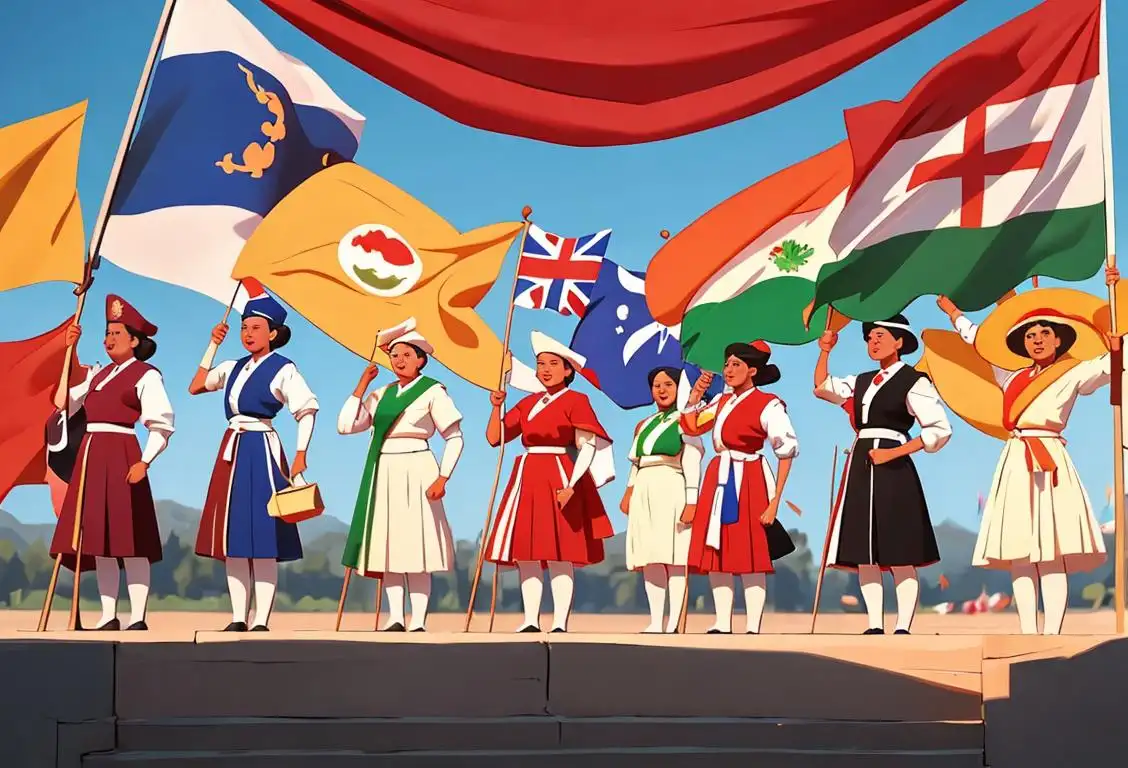National Flag On Eve Of Republic Day

Welcome to WhatNationalDayIsIt.com! Today, we're diving into the history and significance of the national flag on the eve of Republic Day.
When is Flag On Eve Of Republic Day?
It's national flag on eve of republic day on the 26th January.
A Brief History of the National Flag
The national flag is a powerful symbol of a country's identity and unity. In the case of Republic Day, it holds even greater significance as it represents the birth of a nation. On the eve of this monumental day, let's take a journey into the history of the national flag.
The design of the Indian national flag is a beautiful amalgamation of colors and symbolism. It was first unfurled on July 22, 1947, in the Constituent Assembly, marking the birth of an independent and sovereign India. The flag's design consists of three horizontal stripes of saffron, white, and green, with the Ashoka Chakra, a 24-spoke wheel, in the center.
Each element of the flag carries deep meaning. The saffron color represents courage and sacrifice, the white represents truth and purity, and the green represents fertility, growth, and auspiciousness. The Ashoka Chakra, inspired by the Lion Capital of Ashoka, symbolizes righteousness, progress, and constant motion.
The Significance of the National Flag on Republic Day
Republic Day, celebrated on January 26th each year, is a momentous occasion for every Indian. On this day in 1950, the Constitution of India came into effect, declaring India as a sovereign, democratic, and republic nation. As we honor this remarkable milestone, the national flag takes center stage in various celebrations across the country.
The flag hoisting ceremony, accompanied by the national anthem, marks the beginning of the Republic Day festivities. The President of India, as the constitutional head of the country, unfurls the flag at the historic Rajpath in New Delhi.
The unfurling of the national flag is followed by a grand parade, showcasing the diversity, cultural heritage, and military prowess of India. People from all walks of life come together to witness the stunning display of colors, precision marches, and vibrant floats.
Republic Day holds a deeper meaning beyond the pomp and grandeur. It serves as a reminder of the values and principles on which our nation thrives. It is a time to reflect on the democratic ideals, uphold the rights and liberties of every citizen, and strive for the progress and unity of our diverse nation.
History behind the term 'Flag On Eve Of Republic'
1848
The Birth of the Hungarian Republic
In 1848, Hungary was swept by a wave of revolution. The Hungarian people fought for their independence from the Habsburg rule, inspired by the ideals of democracy and freedom. On April 14, 1849, the Hungarian Republic was declared, marking a significant milestone in the nation's history.
1849
The Revolutionary Flag
As the Hungarian Republic was established, a new flag was designed to symbolize the values and aspirations of the revolution. The flag featured three horizontal stripes of red, white, and green, embodying the unity and strength of the Hungarian people. It quickly became a powerful symbol of the nation's fight for independence.
1950
Flag Day on the Eve of Republic
In 1950, Hungary introduced a national holiday known as 'Flag Day on the Eve of Republic' (or 'Zászlónap a Köztársaság Évfordulója Előtt' in Hungarian). The holiday aims to honor the flag and its historical significance, reminding the Hungarian people of their struggle for freedom and the establishment of the republic. It serves as a celebration of national pride and unity.
Present
Continuing Tradition
To this day, 'Flag Day on the Eve of Republic' remains an important annual observance in Hungary. It is a time for the Hungarian people to gather, display the national flag, and reflect on their nation's history and achievements. The flag serves as a powerful symbol of unity, patriotism, and the continuous pursuit of freedom and democracy.
Did you know?
Did you know? The Indian national flag is never hoisted upside down as it is considered a sign of distress.Tagged
romance awareness funFirst identified
22nd January 2017Most mentioned on
26th January 2017Total mentions
59Other days
Suicide Prevention Month Day
Iloveyou Day
Happiness Day
Do Something Nice Day
Compliment Day
Single Ppl Day
Dance Day
Honesty Day
Kiss A Ginger Day
Kissing Fried Chicken Day









